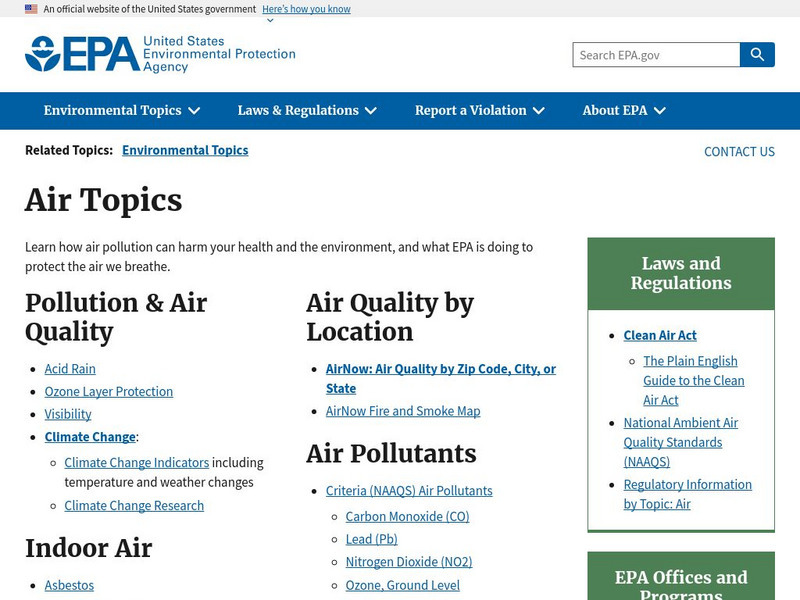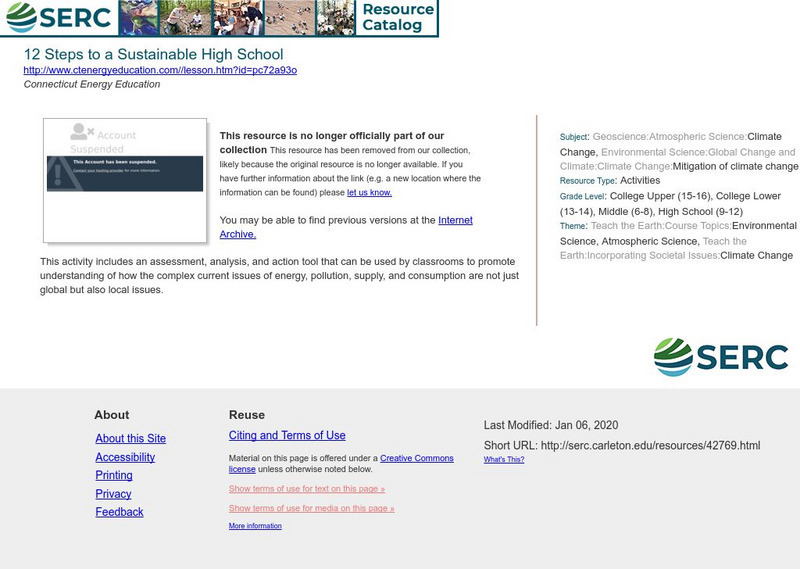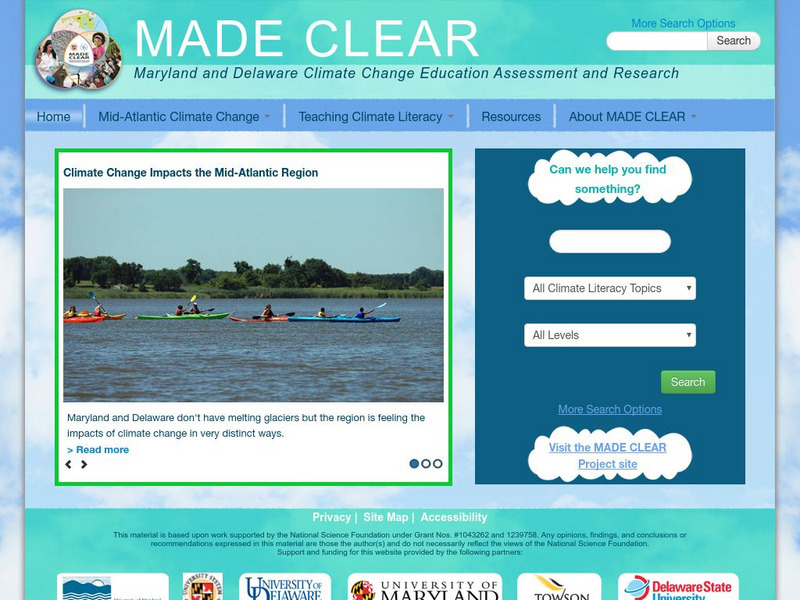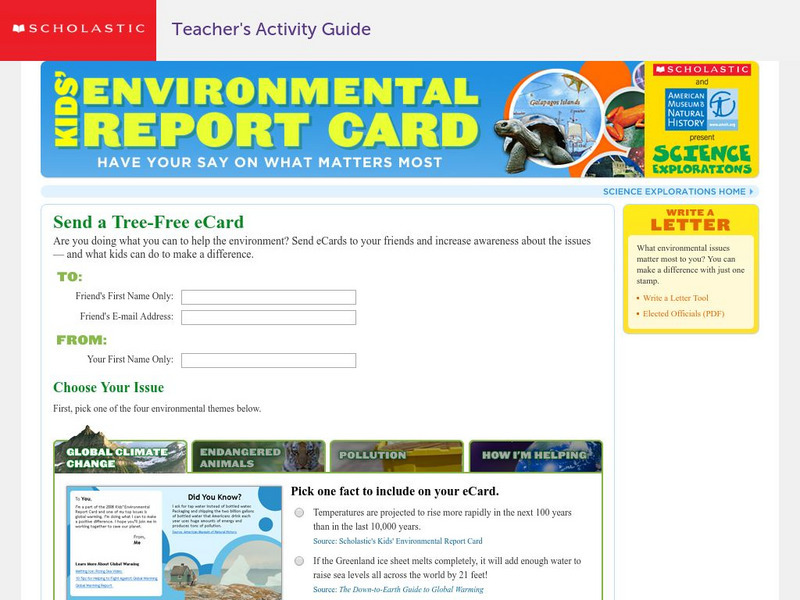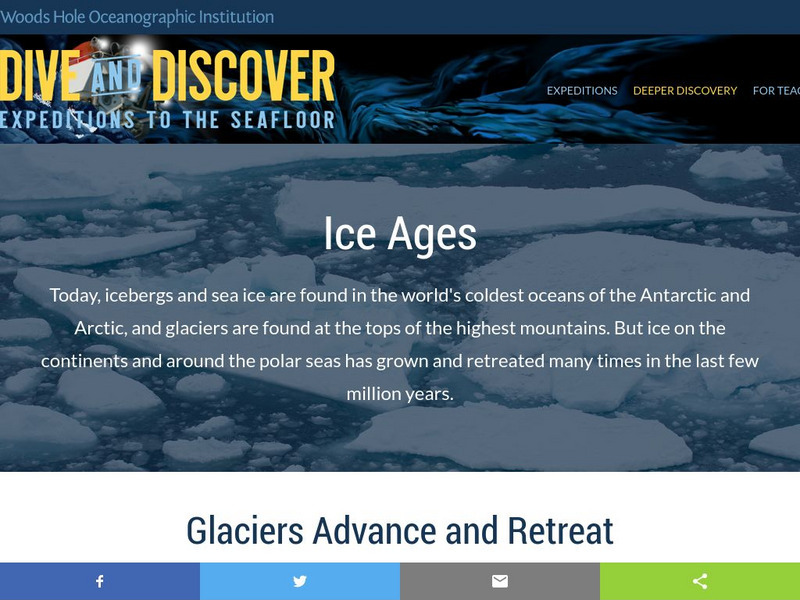Hi, what do you want to do?
Science Education Resource Center at Carleton College
Serc: Lab 7: A Year in the Life of the Earth System
An investigation that is part of a series of lab lessons that expose students to Earth Systems through research, data, and visualizations. In this lab, students will observe how the Earth has changed over time to understand the Earth as...
Other
Royal Geographical Society: Discovering Antarctica
Resource-rich website will help students understand the challenges that Antarctica faces, the history of its exploration and the relationship between Antarctica and the rest of the world. Activities reveal insights about how it feels to...
US Environmental Protection Agency
Epa: Learn the Issues: Air
Air pollution occurs both inside and outside and is dangerous to individuals as well as to the planet. The Environmental Protection Agency oversees laws and regulations related to air quality and has gathered a wealth of information to...
Climate Literacy
Clean: 12 Steps to a Sustainable High School
This activity includes an assessment, analysis, and action tool that can be used by classrooms to promote understanding of how the complex current issues of energy, pollution, supply, and consumption are not just global but also local...
University of Wisconsin
The Why Files: Energy at the Earth's Poles
A resource to help understand how the amount of energy at the Earth's poles affects polar conditions.
University of Illinois
University of Illinois Extension: Tree House Weather Kids: Seasons and Temperature: Greenhouse Effect
Animated resource helps young researchers understand what global warming and the greenhouse effect mean.
Thinkport Education
Made Clear: Quick Review: Sea Level Rise
How well do you understand the impacts of sea-level rise in the Mid-Atlantic region? Take this quick review to find out.
Scholastic
Scholastic: Science Explorations: Kids' Environment Report Card
Cast your vote on the important environmental issues. Associated with each issue, there are at least three links to sites which can further your understanding of the issue. To encourage others to respect the environment, you can also...
Science Education Resource Center at Carleton College
Serc: Lab 3: Land Ice
A lab experiment in a series of experiments that investigates climate and the cryosphere. Here you can learn about how glaciers form. Understand how glaciers offers scientist evidence for climate change. Lab includes both an online...
National Geographic
National Geographic: Human Impacts on the Environment
Humans impact the physical environment in many ways: overpopulation, pollution, burning fossil fuels, and deforestation. Changes like these have triggered climate change, soil erosion, poor air quality, and undrinkable water. These...
Woods Hole Oceanographic Institution
Woods Hole Oceanography Institute: Ice Ages: Glaciers Advance and Retreat
Why have we had ice ages in the past? This resource explores the reasons why the earth's climate has repeatedly changed to create ice ages. A quiz is available to check your understanding.
US Geological Survey
Usgs: Earth Surface Dynamics (Research Activities)
This site from USGS provides several activities to help understand the interrelationships among earth surface processes, ecological systems, and human activities. Also included are links to new findings and programs concerning Earth...
Curated OER
Unesco: Denmark: Ilulissat Icefjord
Located on the west coast of Greenland, 250 km north of the Arctic Circle, Greenland’s Ilulissat Icefjord (40,240 ha) is the sea mouth of Sermeq Kujalleq, one of the few glaciers through which the Greenland ice cap reaches the sea....
Climate Literacy
Clean: Carbon Cycle
This activity from NOAA Earth System Research Laboratory introduces students to the current scientific understanding of the greenhouse effect and the carbon cycle. The activity leads them through several interactive tasks investigating...







